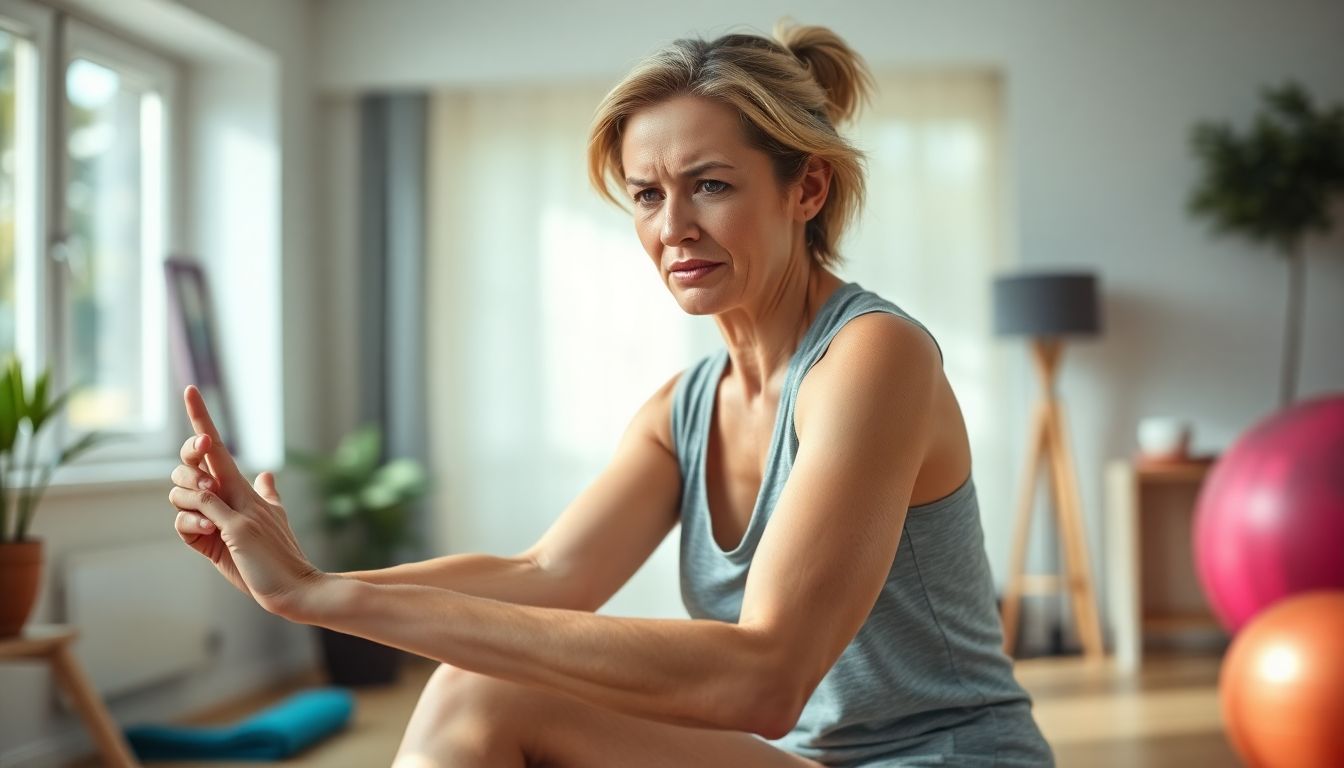Exercising with knee or hip pain

Exercising with Knee or Hip Pain: A Guide to Safe and Effective Workouts
Does your knee or hip pain keep you from working out? You aren't alone. Many people think exercise will only worsen their joint pain. But that's not always true. With the right approach, exercise can be a game changer. This article will show you how to exercise safely. It will also show how to effectively manage knee or hip pain. You'll learn exercises that improve your joint function, too.
Understanding Knee and Hip Pain
Knee and hip pain can come from many places. Pinpointing the cause is the first step toward relief. Understanding the symptoms is important, too. Let's look closer at some common issues.
Common Causes of Knee Pain
Osteoarthritis is a big culprit. It breaks down the cartilage in your knee. Meniscus tears are another common problem. These tears often happen during twisting movements. Ligament injuries, like ACL tears, are also sources of knee pain. Patellofemoral pain syndrome, or "runner's knee," causes pain around the kneecap. Risk factors can include age, weight, and previous injuries. Certain activities or overuse can trigger this joint pain.
Common Causes of Hip Pain
Osteoarthritis can affect your hips, as well. Hip bursitis inflames the bursae. The bursae are fluid-filled sacs that cushion your hip joint. Labral tears involve the cartilage in the hip socket. Tendinitis irritates the tendons around your hip. Risk factors might be age, overuse, or poor posture. These can spark off hip pain.
When to Consult a Doctor
Don't ignore severe pain. If you can't put weight on your leg, see a doctor. Swelling or locking in your knee or hip are red flags. These warrant a medical checkup. Early diagnosis and treatment is key.
The Benefits of Exercise for Joint Pain
Exercise isn't always bad for joint pain. In fact, it can help a lot! Regular physical activity can ease pain. It can boost how well your joints work. Let's see how movement helps sore joints.
Strengthening Muscles Around the Joint
Strong muscles support your joints. Weak muscles cause your joints to take a pounding. Build strong quads, hamstrings, and glutes. These muscles will steady your knee and hip. A stronger foundation means less stress on the joint.
Improving Range of Motion and Flexibility
Stiff joints hurt more. Flexibility exercises can loosen things up. Improved range of motion makes daily tasks easier. Stretching can soothe tight muscles around your knee and hip. Moving them better feels good.
Weight Management and Joint Health
Extra weight puts stress on your joints. Losing weight can relieve pain. Exercise helps you manage your weight. Shedding even a few pounds makes a difference. Weight loss can really improve joint health.
Safe and Effective Exercises
What exercises are kind to painful knees and hips? Low-impact options are your best bet. These exercises put less stress on your joints. Check out these safe and effective options.
Low-Impact Cardio Options
- Walking: Start with short, gentle walks.
- Swimming: Water supports your weight.
- Cycling: Adjust the seat height for comfort.
- Elliptical training: It mimics running, but is easier on the joints.
Focus on good form. Increase your workout time little by little.
Strengthening Exercises
- Wall sits: Hold for 30 seconds.
- Hamstring curls: Use light resistance.
- Glute bridges: Squeeze your glutes at the top.
- Calf raises: Use a chair for balance.
Modify these as you need to.
Flexibility and Stretching Exercises
- Hamstring stretches: Keep your back straight.
- Quad stretches: Gently pull your heel toward your butt.
- Hip flexor stretches: Lean into the stretch.
- Calf stretches: Lean against a wall.
Move gently and don't overstretch.
Exercise Modifications and Precautions
Pay attention to your body. It will send you pain signals. Also, it's very important to warm up and cool down. A gradual increase in intensity is also important.
Listen to Your Body
Don't ignore pain. If something hurts, stop! Pushing through pain can cause more problems. Respect your body's limits.
Proper Warm-Up and Cool-Down
Warm-up before exercising. This prepares your muscles. Gentle stretches will work. Cool-down after you are done exercising, too. This helps prevent stiffness.
Gradual Progression
Don't do too much, too soon. Increase exercise time a little at a time. Slowly up the intensity. Your joints will appreciate it.
Creating a Personalized Exercise Plan
Everyone's needs are different. Make a workout plan that fits you. Work with a professional for the best results. Setting realistic goals is key.
Consulting with a Physical Therapist
Physical therapists are joint experts. They can design a plan just for you. A personalized program will maximize your results. They'll make sure you are doing it safely, too.
Setting Realistic Goals
Don't try to do too much at first. Set goals you can actually reach. Celebrate your success, no matter how small. Small victories keep you motivated.
Tracking Progress and Making Adjustments
Keep track of your workouts. Note how you feel. Adjust your plan as needed. If something isn't working, change it.
Conclusion
Exercise can ease knee and hip pain. Remember to exercise safely. Make changes as needed. And create a plan that's just for you. Take action today. Manage your pain with exercise. Talk to a professional if you need help.
DR.IQBAL


Comments
Post a Comment